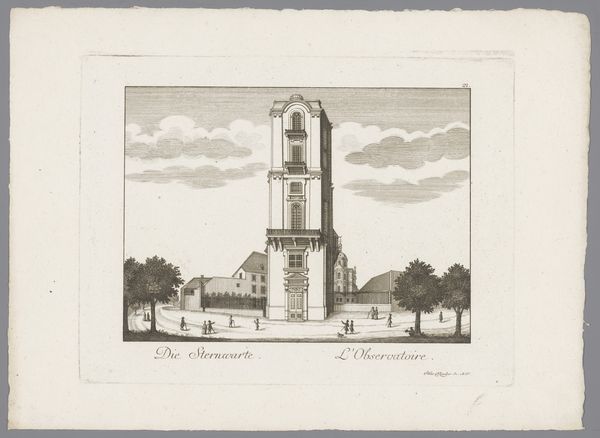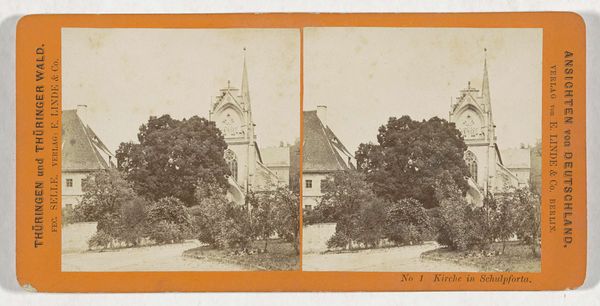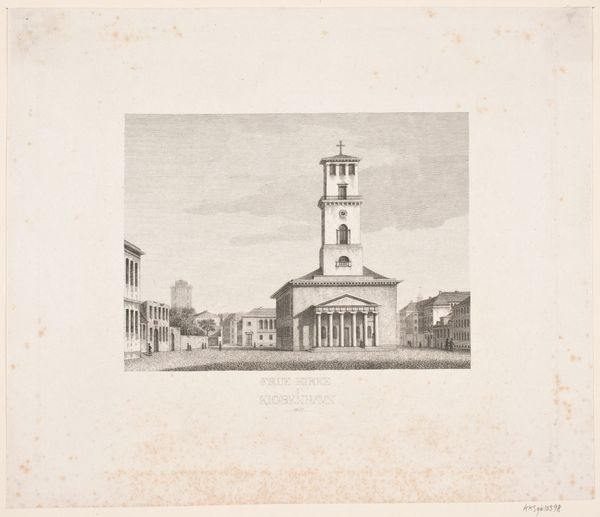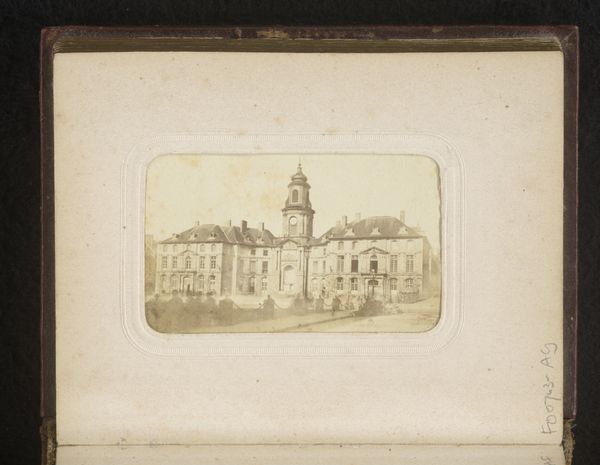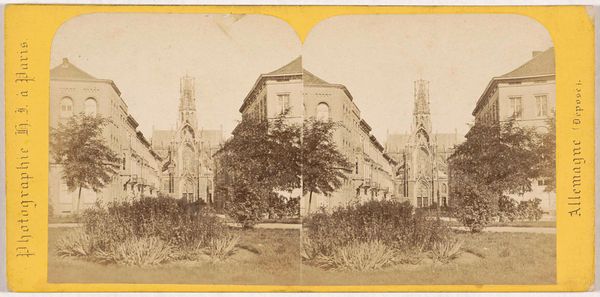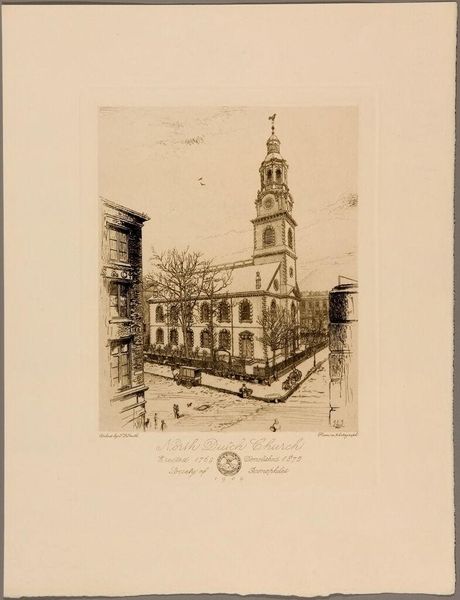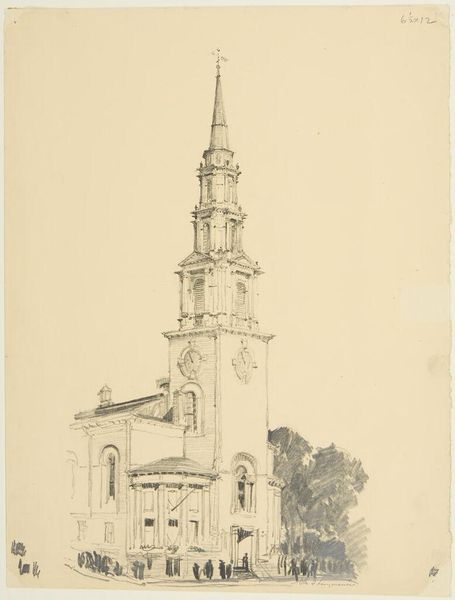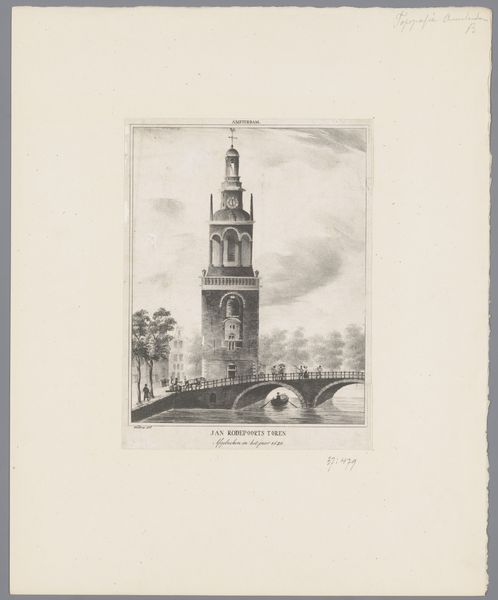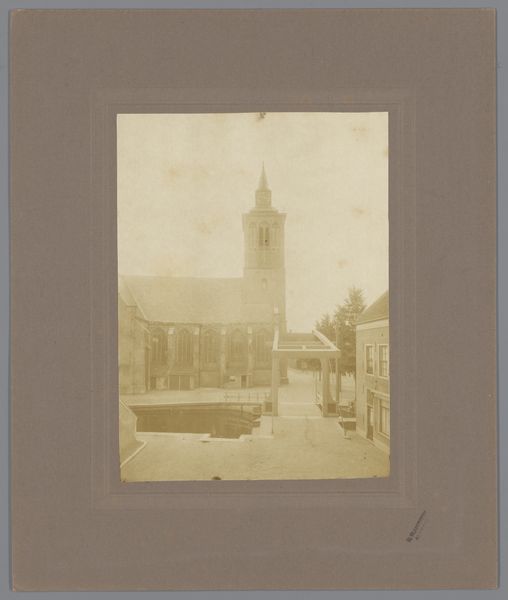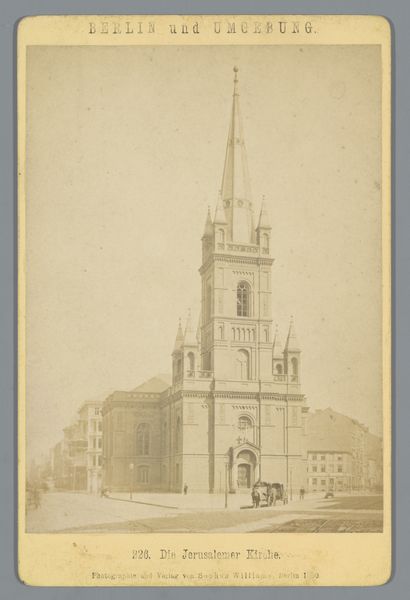
Dimensions: height 86 mm, width 176 mm
Copyright: Rijks Museum: Open Domain
Editor: Here we have Hermann Selle's gelatin silver print, "Stadsslot in Weimar," created sometime between 1868 and 1890. It strikes me as incredibly ordered, almost serene. What do you see in this piece, especially considering the historical context? Curator: I see a photograph that, while seemingly a straightforward depiction of a landmark, also speaks volumes about power and representation in 19th-century Germany. How does seeing the seat of power this way, mediated through photography, shift the understanding of authority? Whose gaze are we adopting when viewing this "Ansichten von Deutschland?" Is it a tool of promoting nationalism, creating a visual record, or something else entirely? Editor: I hadn't considered it as a tool of nationalism. It seems so... benign. So, this organized view isn’t necessarily neutral? Curator: Exactly. Think about the context: the rise of nation-states, the development of mass media. Photography was used to construct and disseminate particular narratives. By showing the Weimar City Palace in this light, what kind of image of German identity is being projected? Who benefits from this image, and whose stories are left out? Editor: It’s fascinating to consider how seemingly objective images are, in fact, carefully constructed and loaded with meaning. I'll definitely view photographs from this period differently now. Curator: Precisely! Understanding these historical dynamics encourages a more critical way of interpreting images of any age. Editor: Thanks, I see so much more now than order, towers and trees!
Comments
No comments
Be the first to comment and join the conversation on the ultimate creative platform.


